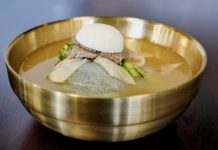
My first experience eating oysters did not go very well. I was just 8 years old when my father insisted I try them while we were crossing the Atlantic Ocean on the Cunard ocean liner, the Queen Mary.
I thought it was disgusting, slimy, and horrible-looking. I hesitated, then swallowed one, wincing as it slithered down my throat.
Fast forward to college in the 1970s, and I have a hot date at a seafood restaurant with a woman I really want to like. So, what does she order? Oysters.
Then she looks me in the eyes, and in a smoldering voice says: ÔÇ£You do like oysters, donÔÇÖt you?ÔÇØ
The blood leaves my face, and I get sweaty. ÔÇ£Of course, I do,ÔÇØ I say, as she passes me a wobbling mass in a cold shell.
I close my eyes and pop it my mouth. I manage to get it down and keep it there.
But, lo and behold, it was totally different than the one on that ship 10 years earlier.
In that moment, it dawned on me that my first oyster was bad. It had turned.
The lifting of that veil was a ÔÇ£hallelujahÔÇØ moment, and with lots of Champagne, my love of oysters took flight.
That much-appreciated memory made me smile recently, while enjoying a meal at the exceptional new oyster bar and seafood-driven restaurant in Ferndale called Voyager.
The simply done, quite hip and cool 30-plus seater is tucked away in a reclaimed cinderblock garage just off Nine Mile Road at Burdette Street, near the jumble of railroad yards and tracks that run through that area.
Voyager is the second metro Detroit project of owner Eli Boyer, who was one of the original partners at Gold Cash Gold in Corktown.

Considering that the closest oyster to Detroit is at least 600 miles to the East Coast, or 2,400 miles to the West Coast, the chutzpah of putting an oyster bar in our area strikes me as very gutsy indeed.
BoyerÔÇÖs menu and kitchen are the province of co-chefs Jennifer Jackson and Justin Tootla, both of whom trained at the Culinary Institute of America in Hyde Park, New York, and spent time working at some of the biggest names in American restaurant dining, including Prune and Le Bernardin in New York City; Chez Panisse in Berkeley, California; Eva in Los Angeles; and more locally, at Mission Table in Traverse City.
Jackson was raised in northeast Georgia, which imbued her with the food of her southern roots, while TootlaÔÇÖs Midwestern mother and Indian father exposed him to curries, cardamom, ginger, and a myriad of other spices and food.
What makes VoyagerÔÇÖs food so distinct is the flavors, freshness, and a few showy culinary acrobatic twists that purposely focus on Jackson and TootlaÔÇÖs kitchen skills.
Take just one dish, the shrimp tartine: fresh, sweet Gulf shrimp, tossed in an Alabama-style white barbecue sauce and sprinkled with a most extraordinary tangy, slightly bitter lemon-grass tasting chopped green garnish.
Our waitress told us the garnish is made from charred asparagus thatÔÇÖs been grilled, then dried and finely chopped.
What also drives Voyager is its variety of choices: bone marrow and mussels with mortadella and scallions; spicy hush puppies with honey butter; a fishermanÔÇÖs stew with a rouille (the cayenne pepper-based sauce used in bouillabaisse) and sourdough toast for sopping up juices; and pan-seared scallops and sweetbreads, deep fried and served with a hollandaise sauce.
 But the heart of Voyager is oysters. And it boasts what must be the single largest selection of fresh oysters that I have seen in years ÔÇö certainly in a Detroit restaurant. They vary daily, depending on what is available.
But the heart of Voyager is oysters. And it boasts what must be the single largest selection of fresh oysters that I have seen in years ÔÇö certainly in a Detroit restaurant. They vary daily, depending on what is available.
One evening, the stand-alone oyster list consisted of at least a dozen choices, a daily supplement to the regular menu. On our visit, it consisted of two varieties from Washington state, one of which I had never heard of. The same list had other varieties from the New England coast: Maine, Long Island, Massachusetts. Still other choices came from Mexico, two from New Zealand, two from Virginia, and one from South Carolina.
For any restaurant, fish is very expensive and risky. Oysters are up at the top of the list for high risk, in terms of cost, but also sanitation and health. Nothing is more perishable and short-lived.
If you are an oyster lover, this is an extraordinary selection, carefully assembled by a good palate that discerns the minutiae of differences that each of these regions produce.
To me, the effort and risk are not just commendable, but remarkable. I tried a half dozen each of Long Island oysters ÔÇö fleshy, gnarly-sandy colored shell, and plump and delicate in taste, yet totally odorless. Not even a salty sea smell.
By contrast, I also had a half dozen of the Mexican Kumiai, which were lightly sweet and fresh, almost floral in odor. They were medium-sized, and the shell had a pearlier blue-black on the inner shell, with a ÔÇ£darkÔÇØ robe or mantle around the oyster itself. In flavor, the Kumiais were more delicate and distinct. Although IÔÇÖd grown up around Long Island oysters, I found the Mexicans were more charming, light, and elegant.
Hopefully, Voyager can keep this up, because oysters must be spot-on fresh when they hit the table or they fail.

Voyager is just one of several former service stations and garages that have found new life as restaurants around in metro Detroit: Red Crown in Grosse Pointe Park, Vinsetta Garage in Berkley, and Bigalora in Ann Arbor are just a few.
I like these garage-kit eateries, but each time IÔÇÖm in one, I half expect the server to stop at my table and offer to check my oil level or caution that my air filter should be changed soon. That or they will change your wiper blades for a good tip.
Still, they work very well, thanks to tall ceilings and the ability to open the huge roll-up glass-panel doors, which give restaurant architects a simple way to provide dining al fresco in the summer, and keep lots of natural light flowing into them in the dreary winter days.
The design of Voyager is utterly simple but works within its three full cinderblock walls and a partial roll-up truck garage door with glass panels.
The interior wall along the bar has been trimmed with rough lumber, two-by-fours, and two-by-tens, blocked out to make display shelving that hold assorted bottles and other odd, kitschy items.
The look is fun, but its fresh fare is what makes it worth a visit.
600 Vester St., Ferndale, 248-658-4999. D: Tues.-Sat.
|
| ╠² |
|








